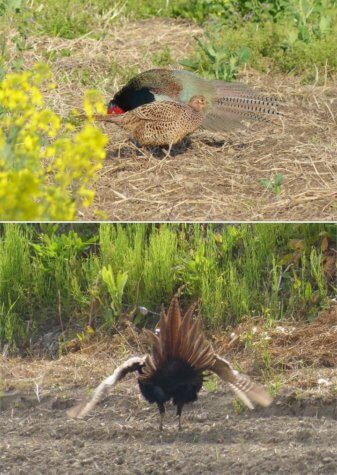TOKYO — Eyewitness accounts in Japanese literature dated 620 A.D. describe an awe-inspiring red light darting across the night sky. According to the historical texts, people who saw the display likened it to the tail of a pheasant; a wide fan of red feathers shining down on Earth. For the following 1,400 years, scientists and scholars alike have been puzzled by what was supposedly seen that night so many years ago.
Perhaps a bit late, but nonetheless fascinating, researchers from The Graduate University for Advanced Studies believe they may have finally figured out the mystery. Their hypothesis is that the visual display that night was caused by a red aurora, but not just any red aurora – one that occurred during a magnetic storm.

“It is the oldest Japanese astronomical record of a ‘red sign,'” says Ryuho Kataoka, a researcher with the Department of Polar Science in the School of Multidisciplinary Sciences at The Graduate University for Advanced Studies and the National Institute of Polar Research, in a release. “It could be a red aurora produced during magnetic storms. However, convincing reasons have not been provided, although the description has been very famous among Japanese people for a long time.”
Auroras in general have long been the stuff of legend, but scientists have been hesitant to label what happened that night as an aurora because they don’t usually look like fanned pheasant tails. Typically, auroras wave across the night sky in an almost ribbon-like fashion.
Other scholars have speculated the Japanese saw a comet that night, but comets almost never appear red.
For this most recent research into the event, Kataoka and his team decided to approach the incident from a more analytical perspective. They estimated that in 620 the magnetic latitude of Japan was roughly 33 degrees. Today its latitude is 25 degrees. That difference in degrees may account for the eyewitness reports at the time describing the “pheasant tail” as being roughly 10 degrees long. Basically, the mysterious red light was right within the area at the time that would have been affected by a magnetic storm.
“Recent findings have shown that auroras can be ‘pheasant tail’ shaped specifically during great magnetic storms,” Kataoka explains. “This means that the 620 A.D. phenomenon was likely an aurora.”
Moving forward, the study’s authors would like to apply modern science to other mysterious aspects of world literature and history.
“This is an interesting and successful example that modern science can benefit from the ancient Japanese emotion evoked when the surprising appearance of heaven reminded them of a familiar bird,” Kataoka concludes. “We hope to continue exploring this collaboration between science and literature.”
For reference, pheasants have been culturally important in Japan for quite some time. They were believed to be heavenly messengers in traditional Japanese folklore.
The study is published in Sokendai Review of Culture and Social Studies.
